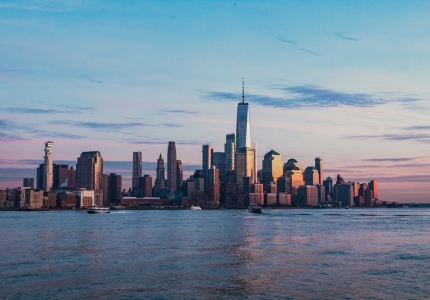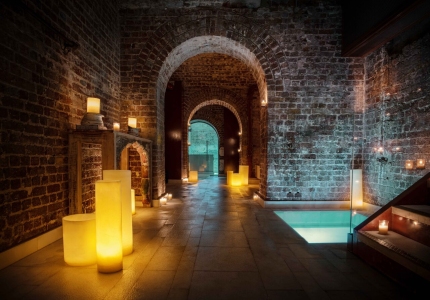Almería is a capital city and province within the autonomous community of Andalusia, located in the southeastern coast of Spain. Known as the home of the Almería Cathedral and the Alcazaba, the second largest Muslim fortress in Andalusia, Almería is a living remnant of the ancient civilizations that called Almería their home. Its magnificent architecture and brightness give it a Moroccan appearance, and the beautiful beaches and year round sunny climate have made it a cultural and visual destination for tourists and filmmakers alike.
Prehistory
Almería’s proximity to the Mediterranean Gulf naturally made it a major harbor and port city. It was home to many different civilizations, including Los Millares and El Argar of the Metal Age, followed by the Phoenicians and later the Carthaginians. The Phoenicians built many colonial cities throughout the shores of the Mediterranean sea to secure monopoly over their natural resources and avoid having to pay tribute to the rest of the ruling empires. Even though most of these colonial cities lacked the population or necessity to expand, the city of Carthage experienced an unprecedented growth and transformed itself into the commercial hub of the Western Mediterranean and Northwest African territory. The Carthaginians would retain this power until their demise in 206 BC by the Roman Republic.
Roman Empire
After Roman Empire conquered the Carthaginians, the powerful port city was named Portus Magnus. The Romans ultimately took over the Iberian Peninsula and renamed it Hispania at the beginning of the 3rd century, where they would remain for the next 700 years. The vast expansion of the Roman Empire would eventually create turmoil and resentment within its own walls. An increasing need of a bigger army led to increased taxation, which in turn led to widespread poverty, starvation and slavery. A plague and the spread of Christianity fatally diminished the number of people available and willing to join the army, which inevitably led to a decline in marriage, population and tax revenues. The glory of the Romans continued to wane as they were constantly attacked and eventually overthrown by the Germanic tribes that were running towards the northern borders of the Roman Empire.
The Middle Ages
After a short rule by the Visigoths, the spread of Christianity came to a halt in the 10th century as the majority of the Hispanic Peninsula was captured by the Muslims, marking their Westernmost territory within their kingdom. The port city known as Portus Magnus became Almería, the major port of the Ummayad Caliphate of Córdoba.
The Muslim Era
The majestic port city was renamed Almería in 955 AD by Abd-ar-Rahman III, Caliph of Córdoba. After the decline of the Ummayad Caliphate, the Moorish taifas took over. The hot and arid landscape of the region provided fertile soil and conditions for growing mulberry trees, enabling a prosperous silk and textile industry, a trade that made the port of Almería even more valuable and helped the economy flourish greatly in the 11th century. During this time, the city of Almería enjoyed the peak of its historical magnificence. Soon after, however, the port city would continue to be passed from one kingdom to another; it was shortly annexed by Valencia and later given to the Banu Sumadih dynasty until the Almoravids took over in 1091, and would remain there until the late 15th century.
The Modern Age
In 1489, the region of Almería came into the hands of the Spanish Catholic monarchs. Ten years later, a widespread forced conversion of Muslims ignited a struggle between Christianity and Islam that would characterize and dominate the region during the 16th century.
XVI century
The Golden Middle Ages eventually burnt out and gave way to darker times. At the turn of the 16th century, the Spanish “Reconquista” set out to convert the Muslims to Christianity by force and, after two cruel revolts in the region of Alpujarra that resulted in the death of the last Moorish leader, the Catholic monarchs succeeded in kicking out the remaining Muslims that resisted conversion. Devastating earthquakes, pirate attacks and war shook the city throughout the 1500s.
XVII-XVIII centuries
By the beginning of the 17th century, Berber pirates were frequently attacking the West Mediterranean coast. The expulsion of Muslims continued on a wider scale from 1609 until 1614, now targeting descendants of the Muslims. Even though chaos still threatened and affected the region, Christian control of the land brought about the Renaissance and the Baroque era, prompting the construction of numerous churches and extravagant buildings.
The Contemporary Age
Slowly but surely, Almería started to regroup and rebuild itself. Although it managed to regain some of its prosperity, troubling times would still loom in the distance. Nevertheless, after centuries of withstanding sieges, plagues, epidemics, civil wars and natural disasters, the province of Almería has continued to push through and emerge once again as a beautiful and prosperous city.
XIX century
The 19th century was Almería’s age of industrial prosperity. The discovery of enormous lead, iron and gold mines propelled British and French companies to establish their business in Almería, boosting the city’s treasury and restoring some of its prestige and importance within the kingdom of Spain. Throughout the next hundred years, Almería experienced incredible growth, from having a population of 17,800 in 1842 to 47,326 in 1900, and erecting theaters, schools, a central market, a library and a train station.
XX century
In 1936, a bitter political climate between Republicans and Nationalists transformed into the Spanish Civil War, which ensnared the people in Almería in a state of fear and alarm. The city was drilled with extensive networks of bomb shelters as the war between democracy and fascism roared on. The city was bombed on May 31, 1937, destroying over 30 buildings, wounding and killing dozens of civilians. Two years later, the Spanish Civil War ended with the Nationalist Francisco Franco establishing a military dictatorship that would last until his death in 1975.
Tourism, cultivation of vegetables in greenhouses, the growth of solar energy and the rise of film and TV productions have economically benefited Almería greatly throughout the 20th century. The variety of picture-worthy locations have made the province of Almería a popular spot for filmmakers and directors, which in turn spurred the construction of hotels and expansion of airport amenities in the 1960s. Some popular Hollywood projects shot throughout Almería are Empire of the Sun, Lawrence of Arabia and The Neverending Story. Most spaghetti westerns such as The Good, The Bad and The Ugly were also shot here, and the sets are currently tourist attractions that can be found in the desert of Tabernas.
If you’ve enjoyed this post, you can try What to see in Almeria



